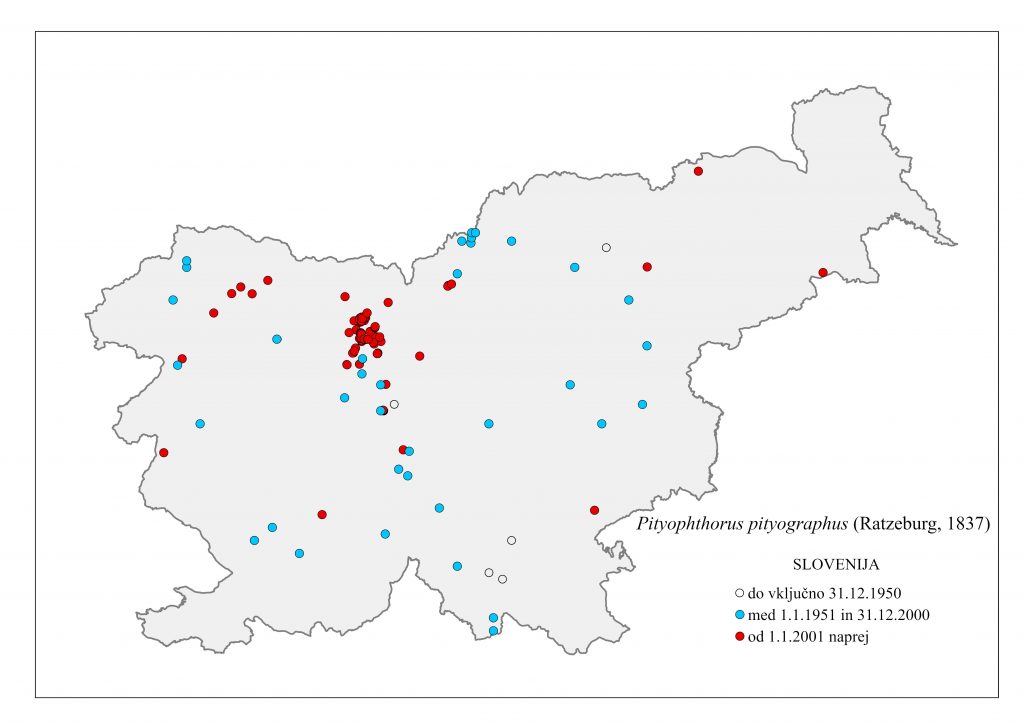18.06. Pityophthorus pityographus (Ratzeburg, 1837)
Presence
E: AU BE BH BU CR CZ DE EN FR GE GR HU IT MC PL RO SK SL SP SV SZ UK YU »Caucasus«
Figure 73: Pityophthorus pityographus, lateral, dorsal (Photo: Maja Jurc)
Older catalogs and keys – citations of name
Grüne 1979: Pityophthorus pityographus Ratzeburg, 1837; Freude, Harde, Lohse 1981: Pityophthorus pityographus Ratzeburg; Titovšek 1988: Pityophthorus pityographus (Ratzeburg); Pfeffer & Knížek 1993: Pityophthorus pityographus Ratzeburg, 1837 a. P. p. pityographus s. str.; Pfeffer 1995: Pityophthorus pityographus pityographus (Ratzeburg, 1837).

Figure 74: Pityophthorus pityographus, distribution map according to historical and recent data
Ecology and presence in Slovenia
The species is distributed in Central Europe, Bulgaria, Romania, the former Yugoslavia, Ukraine, Crimea and the Caucasus. In Slovenia, it is one of the most common species of bark beetle on the thin-barked parts of conifers. P. pityographus is present throughout the country, with only records from Prekmurje and Bela krajina missing (Figure 74). Hosts include Picea abies and P. obovata, less frequently Pinus sylvestris, P. mugo, P. cembra, P. strobus, Abies alba, A. pectinata, A. nordmanniana, A. sibirica, Larix decidua, Pseudotsuga menziesii and Tsuga canadensis. In Slovenia, the species is most common on P. abies and A. alba, but has also been recorded on P. sylvestris, P. mugo, P. strobus, P. halepensis and L. decidua. It develops two generations annually, swarming in May and July and in August. It inhabits parts of trees with thin bark: branches and tops of older trees, but also weakened young trees. The tunnel system is star-shaped, with 4-7 branches (maternal galleries), which can be up to 15 cm long and burrow into the sapwood. On thinner branches they may run around the branches. The larval tunnels are short. In practice, the straight tunnel systems of P. pityographus are often confused with the straight systems of Pityogenes chalcographus. The tunnels are noticeably narrower in P. pityographus, and the impression of the brood chamber is also clearly visible in the sapwood, where the maternal galleries meet. In P. chalcographus, the brood chamber is located in the bark, so that the maternal galleries do not seem to meet. There is a broad longitudinal furrow on the posterior third of the elytra, and the margin of the apex is raised, with a row of hairs. Adult length is 1.6-2.3 mm (Figure 73). The species is secondary, but may pose a threat to younger conifer stands if it multiplies. In older stands, it crowds out young coniferous understorey trees.
